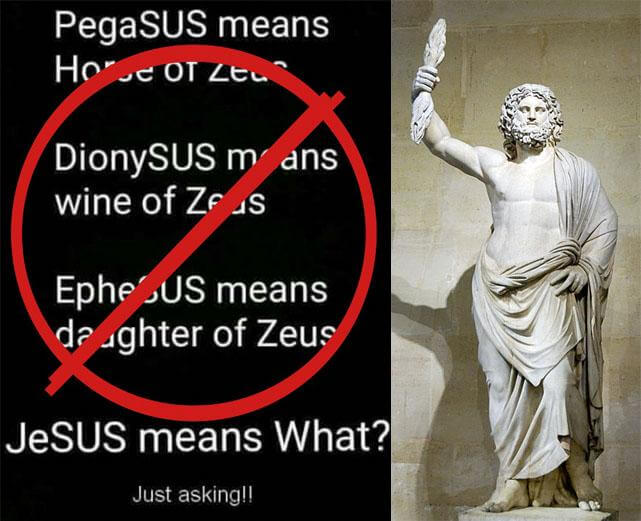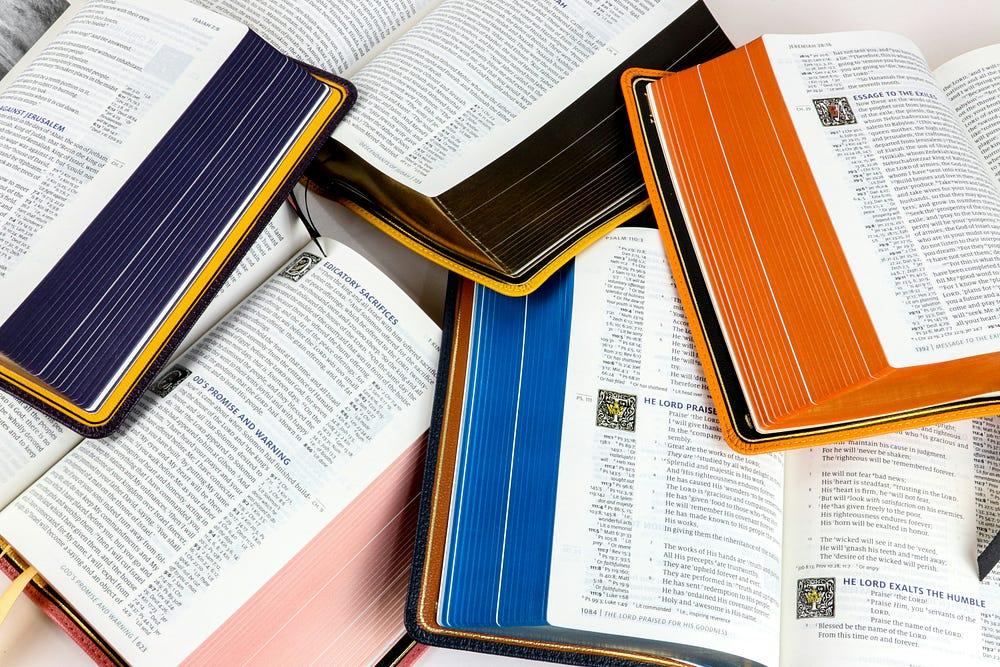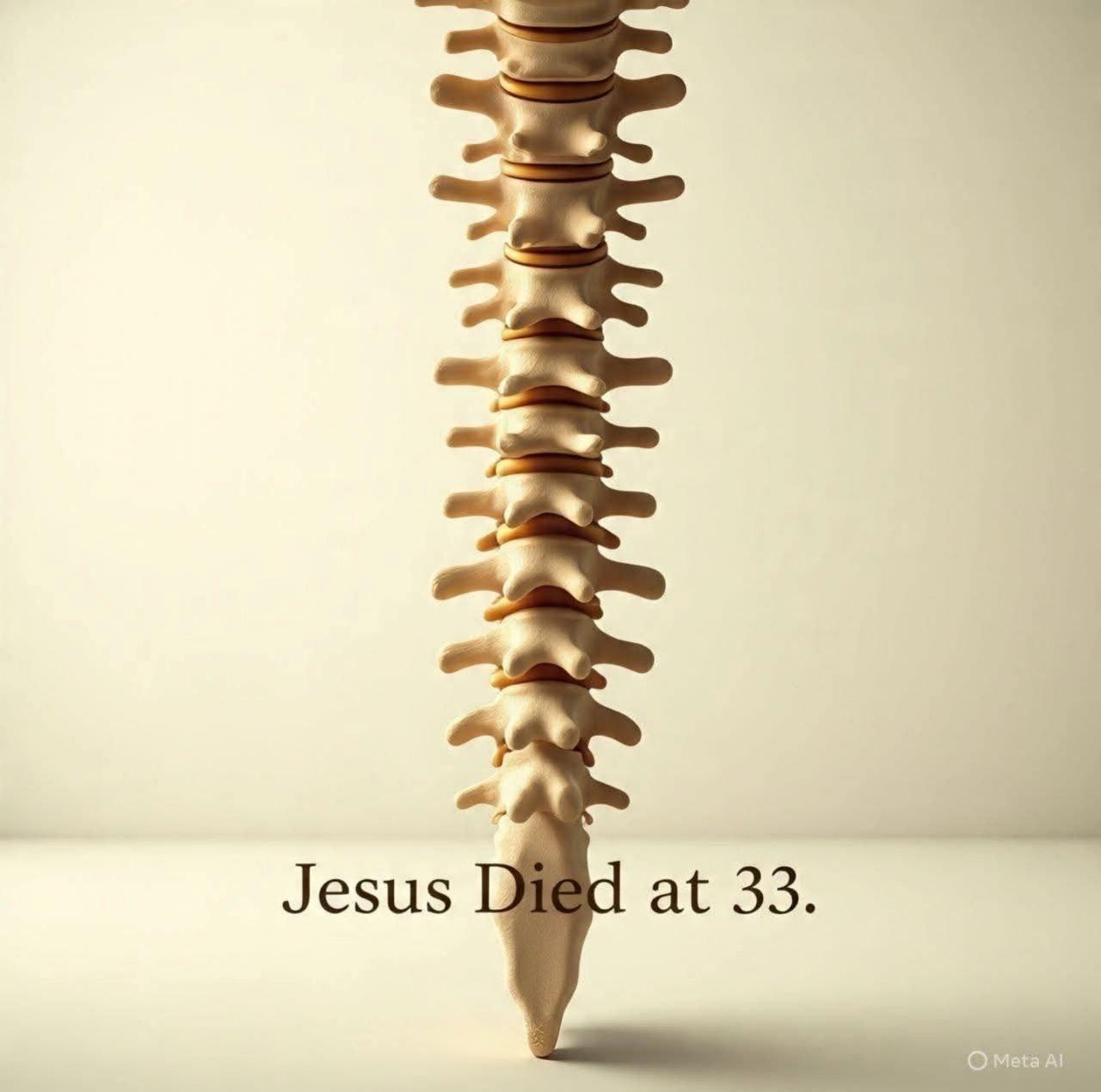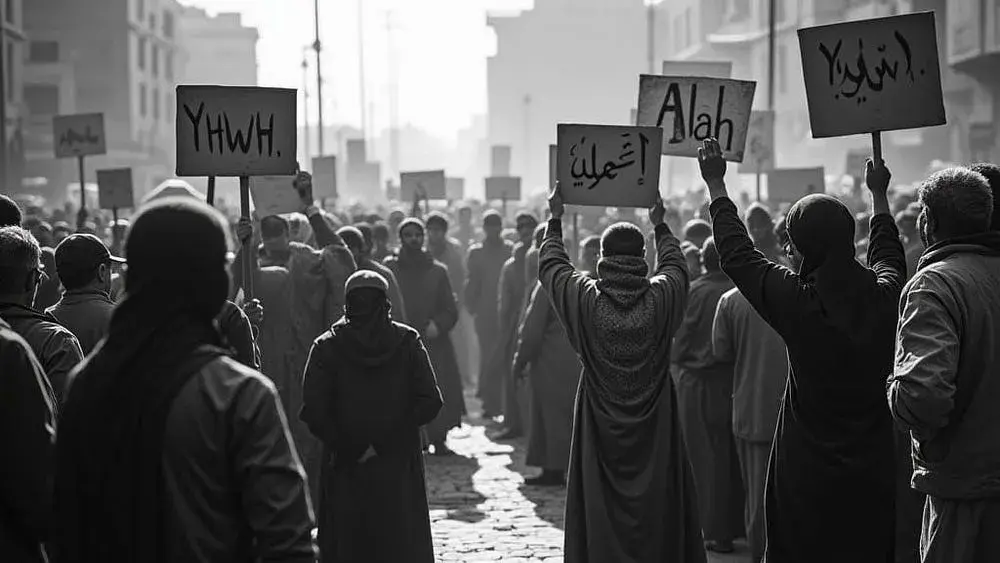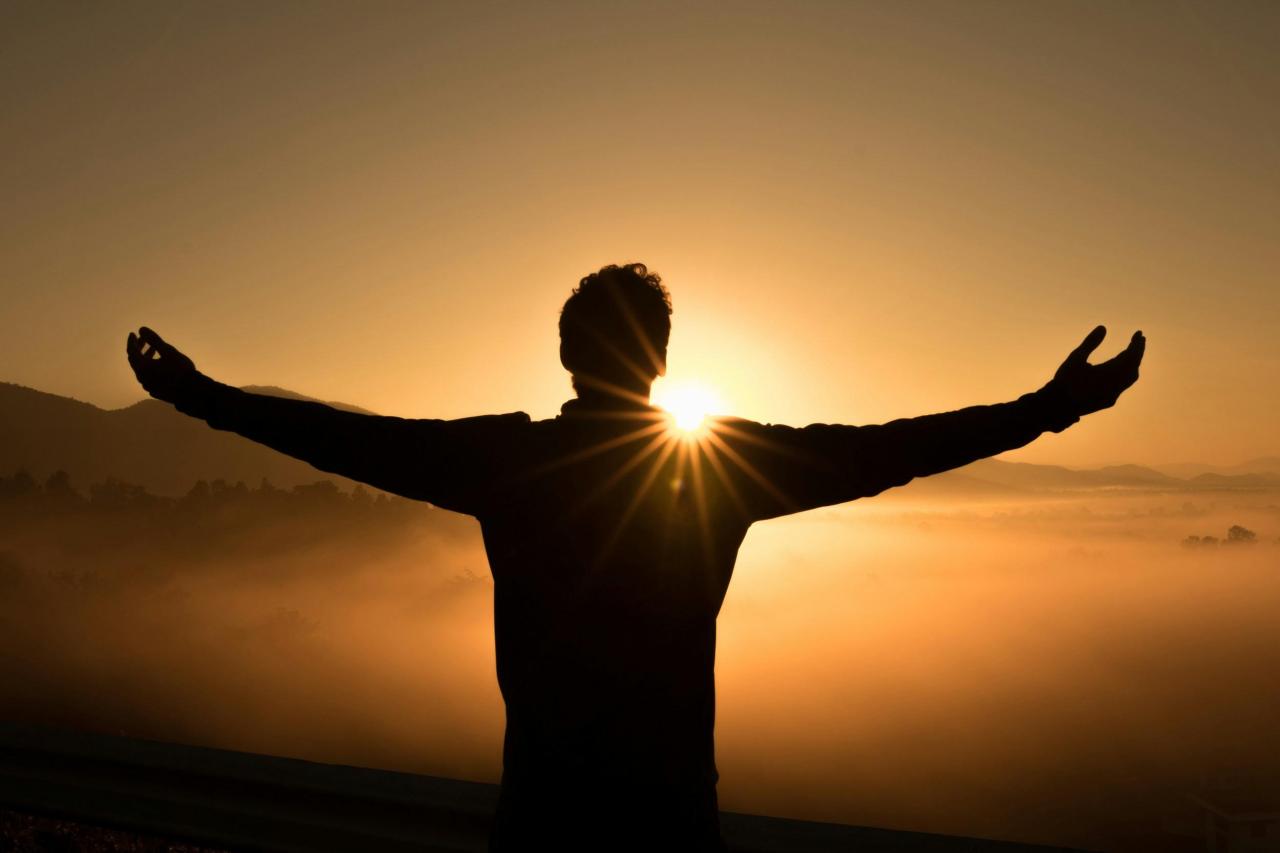What does the word "Catholic" mean?

For many people today, non-Christians and (low church) Christians alike, when they hear the word “Catholic”, certain images spring to mind: the Pope, the rosery, Catholic school, big old churches buildings, choirboys, maybe monks or statues of Mary even; and sadly more recently, sex abuse scandals.
But, generally speaking, all of these are actually aspects of Roman Catholicism — a particular branch of Christianity, and not what the word “catholic” truly means as we’ll see when examining how the early church used the word and what the original Greek word means.
καθολικός (katholikos)
The Greek word where we get the English word “catholic” from is καθολικός (katholikos) meaning “universal”, which comes from the Greek phrase καθόλου (katholou), meaning “on the whole”, “according to the whole” or “in general” (catholicus in Latin). In non-ecclesiastical use, it still retained its root meaning in English in some literature from the 1800s, though that usage has fallen out of common use in modern times.
The first Biblical[1] reference to the word is found in Acts 9:31 when speaking about “the church throughout [all] Judea, Galilee, and Samaria…”. The words “throughout” and “all” are καθ (κατά) and ὅλης (ὅλος) respectively in Greek, which together come to form the word καθολικός.
The earliest historical use of the word, in the context of the Church, is found in one of the letters of Ignatius to the Smyrnaeans, written around A.D. 107, where he writes:
Wherever the bishop shall appear, there let the multitude [of the people] also be; even as, wherever Jesus Christ is, there is the Catholic Church.
From here on we begin to see that the word “catholic” was used in reference to mean “orthodoxy” (the word “orthodox” means “right belief”) as opposed to the non-orthodox heretics who were then by definition not catholic as they were not ‘according to the whole’ which was, as Jude wrote, “the faith that was once for all delivered to the saints” (Jude 1:3). The Catholic Church, in its original and Apostolic sense, would have meant the entirety of the Body of Christ across the world, i.e., all the believers wherever they may be, rather than it being “universal” in the physical sense that the institution of “church” should be all encompassing (like as an official, global institution that all must attend). The difference may be subtle, but it’s an important one.
The development of doctrine about Jesus after Paul’s death, with all its commonalities and unifying features, is seen as an early form of “Catholicism” by modern scholars, which really begins in Ignatius (outside of the New Testament) and continues to grow and spread as time goes on, with the definition becoming more refined.
Historical Use of the Term
As we saw above, Ignatius was the earliest Christian writer we have who applied the word katholikos to the Church. Some people object to using Ignatius as evidence of this, as some of the letters attributed to him are considered spurious (not authentic), though scholarly opinion on this is fairly universal in which are genuine letters, as neither Eusebius nor Jerome makes any reference to the eight spurious epistles.
Justo L. Gonzalez explains in his book, The Story of Christianity: Volume 1: The Early Church to the Reformation, Volume One:
The original meaning of Catholic church referred to this episcopal collegiality, as well as with the multiform witness to the gospel in several canonical gospels. … It was the church “according to the whole,” that is, according to the total witness of all the apostles and all the evangelists. The various Gnostic groups were not “Catholic” because they could not claim this broad foundation. … Only the Church Catholic, the church “according to the whole,” could lay claim to the entire apostolic witness. (pp.81,82).
The other early uses that appear after Ignatius are in the Martyrdom of Polycarp (around AD 150), “…and to all the congregations of the Holy and Catholic Church in every place…”, and then also in the earliest New Testament list from around the second century,[2] the Muratorian fragment the phrase is found three times: “…in the esteem of the Church catholic …. received into the catholic Church … used in the catholic Church …”.
From here on we see the phrase occurring in more and more writers from the second century onward, such as Tertullian A.D. 200 (The Prescription Against Heretics XXX), Clement of Alexandria A.D. 202 (The Stromata 7:17), Cyril of Jerusalem A.D. 315–386 (Catechetical Lectures, XVIII, 26), Jerome A.D. 418 (writing to Augustine), and Augustine of Hippo A.D. 354–430 (Against the Epistle of Manichaeus called Fundamental, ch. IV). Then we have Vincent of Lérins, who famously wrote in A.D. 434:
…in the Catholic Church itself, all possible care must be taken, that we hold that faith which has been believed everywhere, always, by all. For that is truly and in the strictest sense Catholic, which, as the name itself and the reason of the thing declare, comprehends all universally. (Commonitorium, ch. II)
Another interesting use of term appears in the Edict of Thessalonica, Theodosian Code XVI.i.2 (A.D. 380), where Theodosius I, emperor from 379 to 395, declared “Catholic” Christianity the official religion of the Roman Empire for those who “believe in the one Deity of the Father, Son and Holy Spirit, in equal majesty and in a holy Trinity” and that they should “assume the title Catholic Christians”. All others will be “branded with the ignominious name of heretics”.
Overall, from the earliest writers to the emperor in the fourth century, the phrase “church catholic” referred only to those Christians and Churches who held to the ancient traditions passed on by the Apostles and evangelists (Gospels), and to those doctrines which were known as having apostolic origin. This view was more formally solidified by the words added to the end of the original Nicene Creed of A.D. 325 (“And whosoever shall say that there was a time when the Son of God was not … the Catholic and Apostolic Church anathematizes them.”) and also its revision in the Nicene-Constantinople Creed of A.D. 381 (“And we believe in one, holy, catholic and Apostolic Church.”), where you could call Nicene Christianity the “catholic faith”.
Donatist Controversy
During the fourth century, a controversy appeared bringing schism with it in Carthage, when two bishops appeared, one in competition and opposition to the other. The Donatists, named after Donatus, were unlike any other group or heresy which had come before, as their error was not in the nature of Christ or some other aspect of Christology, but rather about ecclesiology.[3] Donatists claimed to represent the true Church and took for themselves the title of “catholic”. This struck against the historical, orthodox Church, which had been universally known as “the catholic church” (ἡ καθολική ἐκκλησία). The Donatists set about to create marks upon which catholicity could be tested—marks that were obviously only found within their congregations (such as the integrity of the believers, and purity and holiness of the community). This forced the historic Church to respond and find an answer to the question “What and where is the one Church?”. Optatus, the legitimate bishop of Carthage, refuted Donatus, interestingly, by using as his defence the fact that their churches were all in communion with the See of Rome. The Donatists were confined to a small area of North Africa and not in communion with Rome, which meant a breakaway from the chair of Peter and therefore unable to claim the name “catholic” as they were anything but. After this, Augustine came on the scene and was a relentless critic of the Donatists, building upon Optatus’ refutations, explaining that the true Church is the one Vine, whose branches are over all the earth. Eventually, this all lead to the schism being quashed in 410.
How the Roman Catholic Church Came to Be
In contemporary usage, the phrase “Catholic Church” (usually capitalised) brings to mind, for many, the Roman Catholic Church specifically. How did this perception shift from meaning the whole Church body to one particular branch of Christianity?
In the early days of Christianity, “Catholicism” was a broad term which encompassed both the Eastern and Western empire of the Greeks and Latins, respectively. The Western Church had its capital in Rome, while the Eastern in Constantinople, and the whole body of believers had the five main Bishops of the following regions, who were known as Patriarchs, overseeing them: Jerusalem, Antioch, Alexandria, Rome, and Constantinople. Despite disagreements, catholicity, or unity, was somewhat kept across both Eastern and Western churches until rising tensions beginning around the 9th century finally came to a head in the 11th century resulting in what is now known as The Great Schism, traditionally dated A.D. 1054[4] (sometimes called the East-West Schism).
There were a variety of doctrinal factors leading up to this point mainly consisting of: the procession of the Holy Spirit (also known as the filioque controversy), if leavened or unleavened bread should be used in the Eucharist, the prominence of the See of Constantinople in the “Pentarchy”[5] and, a major sticking point, the claim to universal jurisdiction by the Bishop of Rome. Out of the five Patriarchs (or “sees”[6]), Rome was considered “first among equals” for the prominence and pre-eminence of Rome both within the Empire and within Christianity as a place of the Apostle Peter’s bishopric.
After the Great Schism, both Eastern and Western churches regarded themselves as “catholic”, but the West recognised only the Pope in Rome as their sole leader, whereas the East continued with their historically recognised Patriarchs, and both sides thought of the other as “not catholic” or “schismatics” for various theological reasons mostly related to the Filioque.
Due to the split, the two sides of the Church came to be known under different names to differentiate them: the Roman Catholic Church (as its centre was now officially only in Rome), and the Orthodox Catholic Church which is more commonly known as the Eastern Orthodox Church. Both claiming to be “catholic” and the true lineage of the ancient Apostolic Church (usually in conjunction with Apostolic Succession[7]), yet both rejecting the others claims and doctrine and having no universal unity at all, which the name “Catholic” should imply.
Post-Reformation and Modern Times
Although, historically, a fair bit out of the scope of the title of this paper, it bears mentioning some modern usages to bring this case to a close with a more satisfying sense of completion. After the Protestant Reformation in the 16th Century when groups of churches, monks and bishops across Europe broke away from the church in Rome, some of the resulting groups have reclaimed the name “catholic”. Lutherans, Anglicans, and some Methodists claim to be “catholic” in the ancient sense, believing themselves to be in continuity with the original Apostolic and universal church and in keeping with the faith as defined by the Nicene Creed, yet despite this, the phrase “Catholic Church” has been pervasive in the minds of the general populace as meaning only the Roman or Western church and nothing more.
Conclusion
As we can see, the word and meaning of “Catholic” is not so simple or straight-forward. It has a very wide history with a lot of nuances, and although the Roman Church has laid claim to the name, it is certainly not it’s only meaning or definition. Some qualification of terms is often needed (or should be) when speaking to Christians of various denominational backgrounds, in order to help people to see the wider, and more historical context, of the “one holy, catholic and apostolic Church”.
Footnotes
[1] The Greek words which make up our English word “universal” in this sense, had been around as a concept in Greek long before Christianity. Aristotle (d. 322 B.C.) wrote in this On Interpretation, 17a: “I call universal (καθόλου) that which is by its nature predicated of a number of things, and particular (καθ᾿ ἕκαστον) that which is not; man, for instance, is a universal, Callias a particular”
[2] The traditional second century date still holds the biggest following amongst scholars, though there are some who propose a fourth century date, claiming it would be more suited to that period when NT lists were quite common, which is appears to parallel. Still, others argue that the fragment isn’t a canon list at all, but an introduction to the New Testament, similar to the Marcionite prologues, which would suit the second century date better. The debate is still unsettled on this matter. (The Biblical Canon Lists from Early Christianity, pp.175-177)
[3] The Donatists refused to accept the sacraments and spiritual authority of the priests and bishops who had fallen away from the faith during the Diocletian persecution (A.D. 303–305).
[4] Even though there was a long period of time when the Eastern and Western churches had a resentful relationship, the date of 1054 is commonly taken as the beginning of the schism, as it is when Pope Leo IX and Michael Cerularius had major disagreements resulting in their mutual excommunication. The Crusades, eventual capture of Constantinople in 1204, and the establishment of a Latin Patriarchate replacing the Eastern Orthodox Ecumenical Patriarchate, rendered all later efforts of unity between East and West by the Church Councils of Lyons (1274) and Florence (1439), of no effect.
[5] Pentarchy, in early Byzantine Christianity, the proposed government of universal Christendom by five patriarchal sees under the auspices of a single universal empire. (Britannica, Pentarchy)
[6] A diocese or territory over which a bishop rules. (Catholic Dictionary)
[7] The Roman Catholic, Eastern Orthodox, Old Catholic, Swedish Lutheran, and Anglican churches accept the doctrine of apostolic succession and believe that the only valid ministry is based on bishops whose office has descended from the Apostles. (Britannica, Apostolic succession)
Further Reading / Sources
Find this article on Academia.edu too: (PDF) The origins and meaning of the word "catholic" in early Christianity | Luke J . Wilson - Academia.edu
- The Nicene Creed: https://thesacredfaith.co.uk/home/perma/1559484660/article/creedal-christians-the-nicene-creed.html
- Man-Made Tradition vs Apostolic Tradition: https://thesacredfaith.co.uk/home/perma/1456617338/article/human-tradition-vs-apostolic.html
- Alexandria, Clement of. The Stromata. Ed. Kevin Knight. n.d. 2021 July 2021. <https://www.newadvent.org/fathers/02107.htm>.
- Augustine. Nicene and Post-Nicene Fathers Series 1, Augustine: The Writings Against the Manichaeans and Against the Donatists. Ed. Philip Schaff. 2. Vol. 4. Hendrickson Publishers, Inc., 1995.
- BBC News. Catholic Church child sexual abuse scandal. 26 February 2019. 29 July 2021. <https://www.bbc.co.uk/news/world-44209971>.
- Britannica, The Editors of Encyclopaedia. Apostolic succession. 3 January 2020. 29 July 2021. <https://www.britannica.com/topic/apostolic-succession>.
- Britannica, The Editors of Encyclopaedia. Pentarchy. 1 November 2016. 29 July 2021. <https://www.britannica.com/topic/pentarchy>.
- Catholic Dictionary. Dictionary: EPISCOPAL SEE. n.d. 29 July 2021. <https://www.catholicculture.org/culture/library/dictionary/index.cfm?id=33355>.
- Cross, Frank Leslie and Elizabeth A Livingstone, The Oxford Dictionary of the Christian Church. Oxford University Press, 2005.
- Edwards, David L. Christianity: The First Two Thousand Years. London: Cassell, 1998.
- Gallagher, Edmon L and John D Meade. The Biblical Canon Lists from Early Christianity. New York: Oxford University Press, 2017.
- Gonzalez, Justo L. The Story of Christianity: The Early Church to the Reformation. 2. Vol. 1. Bravo Ltd, 2010.
- Halsall, Paul. Medieval Sourcebook: Banning of Other Religions Theodosian Code XVI.i.2. 20 January 2021. 29 July 2021. <https://sourcebooks.fordham.edu/source/theodcodeXVI.asp>.
- Jerusalem, Cyril of. Catechetical Lectures. Ed. Kevin Knight. n.d. 29 July 2021. <https://www.newadvent.org/fathers/310118.htm>.
- Kirby, Peter. The Muratorian Fragment. n.d. 29 July 2021. <http://www.earlychristianwritings.com/text/muratorian-metzger.html>.
- Lerins, Vincent of. Commonitorium. Ed. Kevin Knight. n.d. 29 July 2021. <https://www.newadvent.org/fathers/3506.htm>.
- Marone, Paola. The Use of the Term “Catholic” in the Donatist Controversy, in “Pomoerium” 6. 1 January 2004. 29 July 2021. <https://www.academia.edu/1353389/The_Use_of_the_Term_Catholic_in_the_Donatist_Controversy_in_Pomoerium_6_2007-2008_pp._81-91>.
- Roberts, Alexander and James Donaldson. ANF01. The Apostolic Fathers with Justin Martyr and Irenaeus. Ed. A Cleveland Coxe and Philip Schaff. 2. Hendrickson Publishers, Inc., 1995.
- Schaff, Philip and Henry Wace, Nicene and Post-Nicene Fathers Series 2: The Seven Ecumenical Councils. 2. Vol. 14. Hendrickson Publishers, Inc., 1995.
- Tertullian. Prescription against Heretics. Ed. Kevin Knight. n.d. 29 July 2021. <http://www.newadvent.org/fathers/0311.htm>.
Leave a comment Like Back to Top Seen 17.5K times Liked 0 times
Enjoying this content?
Support my work by becoming a patron on Patreon!
By joining, you help fund the time, research, and effort that goes into creating this content — and you’ll also get access to exclusive perks and updates.
Even a small amount per month makes a real difference. Thank you for your support!
Subscribe to Updates
If you enjoyed this, why not subscribe to free email updates and join over 864 subscribers today!
My new book is out now! Order today wherever you get books
Recent Posts
Luke J. Wilson | 19th August 2025 | Fact-Checking
A poetic post has been circulating widely on Facebook, suggesting that our anatomy mirrors various aspects of Scripture. On the surface it sounds inspiring, but when we take time to weigh its claims, two main problems emerge. The viral post circulating on Facebook [Source] First, some of its imagery unintentionally undermines the pre-existence of Christ, as if Jesus only “held the earth together” for the 33 years of His earthly life. Second, it risks reducing the resurrection to something like biological regeneration, as if Jesus simply restarted after three days, instead of being raised in the miraculous power of God. Alongside these theological dangers, many of the scientific claims are overstated or symbolic rather than factual. Let’s go through them one by one. 1. “Jesus died at 33. The human spine has 33 vertebrae. The same structure that holds us up is the same number of years He held this Earth.” The human spine does generally have 33 vertebrae, but that number includes fused bones (the sacrum and coccyx), and not everyone has the same count. Some people have 32 or 34. More importantly, the Bible never says Jesus was exactly 33 when He died — Luke tells us He began His ministry at “about thirty” (Luke 3:23), and we know His public ministry lasted a few years, but His precise age at death is a tradition, not a biblical statement. See my other recent article examining the age of Jesus here. Theologically, the phrase “the same number of years He held this Earth” is problematic. Jesus did not hold the world together only for 33 years. The eternal Word was with God in the beginning (John 1:1–3), and “in Him all things hold together” (Colossians 1:17). Hebrews says He “sustains all things by His powerful word” (Hebrews 1:3). He has always upheld creation, before His incarnation, during His earthly ministry, and after His resurrection. To imply otherwise is to risk undermining the pre-existence of Christ. 2. “We have 12 ribs on each side. 12 disciples. 12 tribes of Israel. God built His design into our bones.” Most people do have 12 pairs of ribs, though some are born with an extra rib, or fewer. The number 12 is certainly biblical: the 12 tribes of Israel (Genesis 49), the 12 apostles (Matthew 10:1–4), and the 12 gates and foundations of the New Jerusalem (Revelation 21). But there’s no biblical connection between rib count and these symbolic twelves. This is a case of poetic association, not design woven into our bones. The only real mention of ribs in Scripture is when Eve is created from one of Adam’s ribs in Genesis 2:21–22, which has often led to the teaching in some churches that men have one less rib than women (contradicting this new claim)! 3. “The vagus nerve runs from your brain to your heart and gut. It calms storms inside the body. It looks just like a cross.” The vagus nerve is real and remarkable. It regulates heart rate, digestion, and helps calm stress, and doctors are even using vagus nerve stimulation as therapy for epilepsy, depression, and inflammation showing it really does “calm storms” in the body. But it does not look like a cross anatomically. The language about “calming storms” may echo the way Jesus calmed the storm on the Sea of Galilee (Mark 4:39), but here again the poetic flourish stretches science (and Scripture) beyond what’s accurate. 4. “Jesus rose on the third day. Science tells us that when you fast for 3 days, your body starts regenerating. Old cells die. New ones are born. Healing begins. Your body literally resurrects itself.” There’s a serious theological problem here. To equate Jesus’ resurrection with a biological “regeneration” after fasting is to misrepresent what actually happened. Fasting can indeed trigger cell renewal and immune repair, but it cannot bring the dead back to life. It’s still a natural process that happens...
Luke J. Wilson | 08th July 2025 | Islam
“We all worship the same God”. Table of Contents 1) Where YHWH and Allah Appear Similar 2) Where Allah’s Character Contradicts YHWH’s Goodness 3) Where Their Revelations Directly Contradict Each Other 4) YHWH’s Love for the Nations vs. Allah’s Commands to Subjugate 5) Can God Be Seen? What the Bible and Qur’an Say 6) Salvation by Grace vs. Salvation by Works Conclusion: Same God? Or Different Revelations? You’ve heard it from politicians, celebrities, and even some pastors. It’s become something of a modern mantra, trying to shoehorn acceptance of other beliefs and blend all religions into one, especially the Abrahamic ones. But what if the Bible and Qur’an tell different stories? Let’s see what their own words reveal so you can judge for yourself. This Tweet recently caused a stir on social media 1) Where YHWH and Allah Appear Similar Many point out that Jews, Christians, and Muslims share a belief in one eternal Creator God. That’s true — up to a point. Both the Bible and Qur’an describe God as powerful, all-knowing, merciful, and more. Here’s a list comparing some of the common shared attributes between YHWH and Allah, with direct citations from both Scriptures: 26 Shared Attributes of YHWH and Allah According to the Bible (NRSV) and the Qur’an Eternal YHWH: “From everlasting to everlasting you are God.” — Psalm 90:2 Allah: “He is the First and the Last…” — Surah 57:3 Creator YHWH: “In the beginning God created the heavens and the earth.” — Genesis 1:1 Allah: “The Originator of the heavens and the earth…” — Surah 2:117 Omnipotent (All-Powerful) YHWH: “Nothing is too hard for you.” — Jeremiah 32:17 Allah: “Allah is over all things competent.” — Surah 2:20 Omniscient (All-Knowing) YHWH: “Even before a word is on my tongue, O LORD, you know it.” — Psalm 139:4 Allah: “He knows what is on the land and in the sea…” — Surah 6:59 Omnipresent (Present Everywhere) YHWH: “Where can I go from your Spirit?” — Psalm 139:7–10 Allah: “He is with you wherever you are.” — Surah 57:4 Holy YHWH: “Holy, holy, holy is the LORD of hosts.” — Isaiah 6:3 Allah: “The Holy One (Al-Quddus).” — Surah 59:23 Just YHWH: “A God of faithfulness and without injustice.” — Deuteronomy 32:4 Allah: “Is not Allah the most just of judges?” — Surah 95:8 Merciful YHWH: “The LORD, merciful and gracious…” — Exodus 34:6 Allah: “The Most Gracious, the Most Merciful.” — Surah 1:1 Compassionate YHWH: “As a father has compassion on his children…” — Psalm 103:13 Allah: “He is the Forgiving, the Affectionate.” — Surah 85:14 Faithful YHWH: “Great is your faithfulness.” — Lamentations 3:22–23 Allah: “Indeed, the promise of Allah is truth.” — Surah 30:60 Unchanging YHWH: “For I the LORD do not change.” — Malachi 3:6 Allah: “None can change His words.” — Surah 6:115 Sovereign YHWH: “The LORD has established his throne in the heavens…” — Psalm 103:19 Allah: “Blessed is He in whose hand is dominion…” — Surah 67:1 Loving YHWH: “God is love.” — 1 John 4:8 Allah: “Indeed, my Lord is Merciful and Affectionate (Al-Wadud).” — Surah 11:90 Forgiving YHWH: “I will not remember your sins.” — Isaiah 43:25 Allah: “Allah forgives all sins…” — Surah 39:53 Wrathful toward evil YHWH: “The LORD is a jealous and avenging God…” — Nahum 1:2 Allah: “For them is a severe punishment.” — Surah 3:4 One/Unique YHWH: “The LORD is one.” — Deuteronomy 6:4 Allah: “Say: He is Allah, One.” — Surah 112:1 Jealous of worship YHWH: “I the LORD your God am a jealous God.” �...
Luke J. Wilson | 05th June 2025 | Blogging
As we commemorated the 500th anniversary of the Protestant Reformation this year, the familiar image of Martin Luther striding up to the church door in Wittenberg — hammer in hand and fire in his eyes — has once again taken centre stage. It’s a compelling picture, etched into the imagination of many. But as is often the case with historical legends, closer scrutiny tells a far more nuanced and thought-provoking story. The Myth of the Door: Was the Hammer Ever Raised? Cambridge Reformation scholar Richard Rex is one among several historians who have challenged the romanticised narrative. “Strangely,” he observes, “there’s almost no solid evidence that Luther actually went and nailed them to the church door that day, and ample reasons to doubt that he did.” Indeed, the first image of Luther hammering up his 95 Theses doesn’t appear until 1697 — over 180 years after the fact. Eric Metaxas, in his recent biography of Luther, echoes Rex’s scepticism. The earliest confirmed action we can confidently attribute to Luther on 31 October 1517 is not an act of public defiance, but the posting of two private letters to bishops. The famous hammer-blow may never have sounded at all. Conflicting Accounts Philip Melanchthon, Luther’s successor and first biographer, adds another layer of complexity. He claimed Luther “publicly affixed” the Theses to the door of All Saints’ Church, but Melanchthon wasn’t even in Wittenberg at the time. Moreover, Luther himself never mentioned posting the Theses publicly, even when recalling the events years later. Instead, he consistently spoke of writing to the bishops, hoping the matter could be addressed internally. At the time, it was common practice for a university disputation to be announced by posting theses on church doors using printed placards. But no Wittenberg-printed copies of the 95 Theses survive. And while university statutes did require notices to be posted on all church doors in the city, Melanchthon refers only to the Castle Church. It’s plausible Luther may have posted the Theses later, perhaps in mid-November — but even that remains uncertain. What we do know is that the Theses were quickly circulated among Wittenberg’s academic elite and, from there, spread throughout the Holy Roman Empire at a remarkable pace. The Real Spark: Ink, Not Iron If there was a true catalyst for the Reformation, it wasn’t a hammer but a printing press. Luther’s Latin theses were swiftly reproduced as pamphlets in Basel, Leipzig, and Nuremberg. Hundreds of copies were printed before the year’s end, and a German translation soon followed, though it may never have been formally published. Within two weeks, Luther’s arguments were being discussed across Germany. The machinery of mass communication — still in its relative infancy — played a pivotal role in what became a theological, political, and social upheaval. The Letters of a Conscientious Pastor Far from the bold revolutionary of popular imagination, Luther appears in 1517 as a pastor deeply troubled by the abuse of indulgences, writing with respectful concern to those in authority. In his letter to Archbishop Albrecht of Mainz, he humbly addresses the archbishop as “Most Illustrious Prince,” and refers to himself as “the dregs of humanity.” “I, the dregs of humanity, have so much boldness that I have dared to think of a letter to the height of your Sublimity,” he writes — hardly the voice of a man trying to pick a fight. From Whisper to Roar Luther’s initial appeal through formal channels was, predictably, ignored. He was advised not to make trouble. But as opposition mounted and corruption remained unchecked, the once quiet reformer grew louder. His theological convictions deepened, and his public persona evolved. The lion did eventually roar — but not on October 31. A Catholic Reformer, Not a Protestant Founder It’s vital to remem...
Luke J. Wilson | 20th May 2025 | Islam
You are not alone. Around the world, many Muslims — people who already believe in one God, pray, and seek to live righteously — are drawn to know more about Jesus (ʿĪsā in Arabic). Some have heard He is more than a prophet. Some have sensed His presence in a dream or vision. And some simply long to know God more deeply, personally, and truly. So what does it mean to become a Christian? And how can you take that step? This guide is for you. 1. What Christians Believe About God and Jesus ➤ One God, Eternal and Good Christians believe in one God — the same Creator known to Abraham, Moses, and the prophets. But we also believe God is more personal and relational than many realise. In His love, He has revealed Himself as Father, Son (Jesus), and Holy Spirit — not three gods, but one God in three persons. ➤ Jesus Is More Than a Prophet Muslims honour Jesus as a great prophet, born of the virgin Mary. Christians also affirm this — but go further. The Bible teaches that Jesus is the Word of God (Kalimat Allāh), who became flesh to live among us. He performed miracles, healed the sick, raised the dead — and lived without sin.Jesus came not just to teach but to save — to bring us back to God by bearing our sins and rising again in victory over death. 2. Why Do We Need Saving? ➤ The Problem: Sin All people — no matter their religion — struggle with sin. We lie, get angry, feel jealous, act selfishly, or fail to love God fully. The Bible says: “All have sinned and fall short of the glory of God.” (Romans 3:23) Sin separates us from God. And no matter how many good deeds we do, we can never make ourselves perfect or holy before Him. ➤ The Solution: Jesus Because God loves us, He did not leave us in our sin. He sent Jesus, His eternal Word, to live as one of us. Jesus died willingly, offering His life as a sacrifice for our sins, then rose again on the third day. “But God proves his love for us in that while we still were sinners Christ died for us.” (Romans 5:8) 3. How Do I Become a Christian? Becoming a Christian is not about joining a Western religion. It’s about entering a relationship with God through faith in Jesus Christ. Here is what the Bible says: ✝️ 1. Believe in Jesus Believe that Jesus is the Son of God, that He died for your sins, and that He rose again. “If you confess with your lips that Jesus is Lord and believe in your heart that God raised him from the dead, you will be saved.” (Romans 10:9) 💔 2. Repent of Your Sins Turn away from sin and ask God to forgive you. This is called repentance. It means being truly sorry and choosing a new way. “Repent therefore, and turn to God so that your sins may be wiped out.” (Acts 3:19) 💧 3. Be Baptised Jesus commands His followers to be baptised in water as a sign of their new life. Baptism represents washing away your old life and rising into a new one with Jesus. “Repent and be baptised every one of you in the name of Jesus Christ so that your sins may be forgiven.” (Acts 2:38) 🕊️ 4. Receive the Holy Spirit When you believe in Jesus, God gives you the Holy Spirit to live within you, guiding you, comforting you, and helping you follow His will. “You received the Spirit of adoption, by whom we cry, ‘Abba! Father!’” (Romans 8:15) 🧎 5. Begin a New Life As a Christian, you are born again — spiritually renewed. You begin to grow in faith, love, and holiness. You read the Bible, pray, fast, and gather with other believers. Your life is no longer your own; you now live for God. 4. What Does a Christian Life Look Like? Jesus said: “If anyone wants to become my followers, let them deny themselves and take up their cross and follow me.” (Matthew 16:24) This means: Loving God with all your heart Loving your neighbour — even your enemies Forgiving others ...


